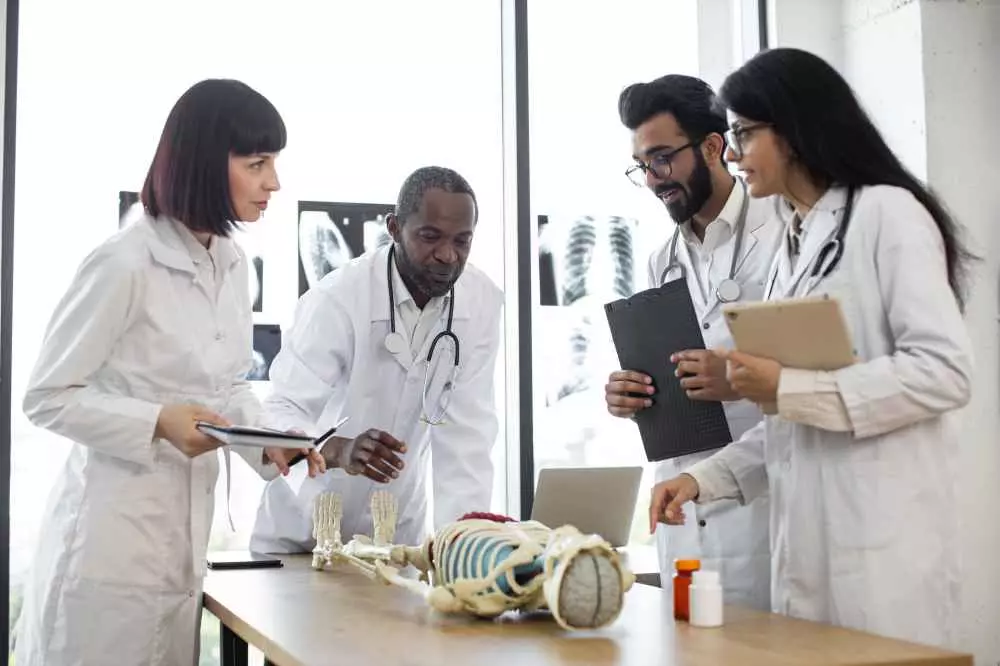Introduction to anatomy education
Anatomical education plays a key role in the training of future professionals in medicine, biomedical sciences and related areas. By understanding the structure and function of the human body, students acquire the necessary skills and knowledge that are the foundation of their future professional practice. To increase the impact of teaching, interactive experiences are increasingly being introduced for engaging and effective absorption of information.
Why is interactivity crucial in anatomy education?
An interactive approach to learning has a number of advantages that significantly affect the way students assimilate knowledge. First of all, interactivity increases motivation and engagement. Students have the opportunity to actively participate in class, which allows them to better absorb the content presented. In addition, interactive teaching methods promote the development of critical thinking and problem-solving skills.
In the context of anatomy, understanding the complex structure of the human body can sometimes be a challenge. Therefore, offering creative forms of learning, such as 3D simulations, educational games, or mobile apps, is becoming increasingly popular. Such tools allow students to explore the human body in a dynamic way.
What technologies support interactive learning?
Innovative technologies such as virtual reality (VR) and augmented reality (AR) play a key role in modern anatomy education. With VR, students can fully immerse themselves in a virtual environment that replicates real anatomical conditions. This enables a close examination of organs and systems, greatly enhancing the educational experience.
AR, on the other hand, by superimposing virtual elements on the real world, allows interaction with anatomical models in real time. This allows students to visualize and study anatomical structures without having to work with dead bodies.
Case studies - practical application of the technology
Many universities and institutions are using VR and AR technologies in their educational programs. For example, medical students use apps that allow for surgical simulations. This allows them to perform surgeries on virtual patients, which greatly enhances their preparation for real challenges in the operating room.
Another interesting example is the use of holograms to teach anatomy, allowing students to admire 3D models of various organs and their interrelationships. These examples show how innovative technologies are revolutionizing the way anatomy is taught and supporting future professionals in their education.
Benefits of interactive experiences in teaching anatomy
Here are some of the key benefits of introducing interactive experiences in anatomy education:
Improved learning: Students who engage in interactive experiences tend to remember information better.Reduced stress: Working with virtual patients eliminates the anxiety associated with performing procedures on live people.Preparation for real-life situations: Interactive experiences provide an opportunity to safely practice skills that will be essential in future careers.Challenges and limitations in technology implementation
Despite its many advantages, the introduction of interactive technologies into anatomy education also brings some challenges. First of all, not all institutions have access to the latest technology, which can lead to educational inequities. In addition, it is necessary to constantly update the software and train lecturers to use the new tools effectively.
It is also worth noting that some teaching methods may be more engaging, but do not replace traditional education, especially in the context of hands-on, anatomy-related classes. For this reason, it is important to find the right balance between different teaching methods.
Summary and future of anatomy education
Interactive experiences in anatomy education are gaining importance and represent a new quality in the education of future medical professionals. The use of modern technology, such as VR and AR, allows students to learn practical skills in a safe environment.
The future of anatomy education seems promising, and further developments in technology will likely lead to even greater opportunities in teaching and skill development. As interactive techniques become more widespread, we can expect them to bring further innovation to educational units, thus helping to better prepare students for the profession.
